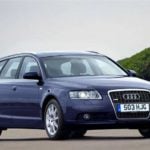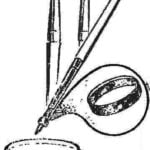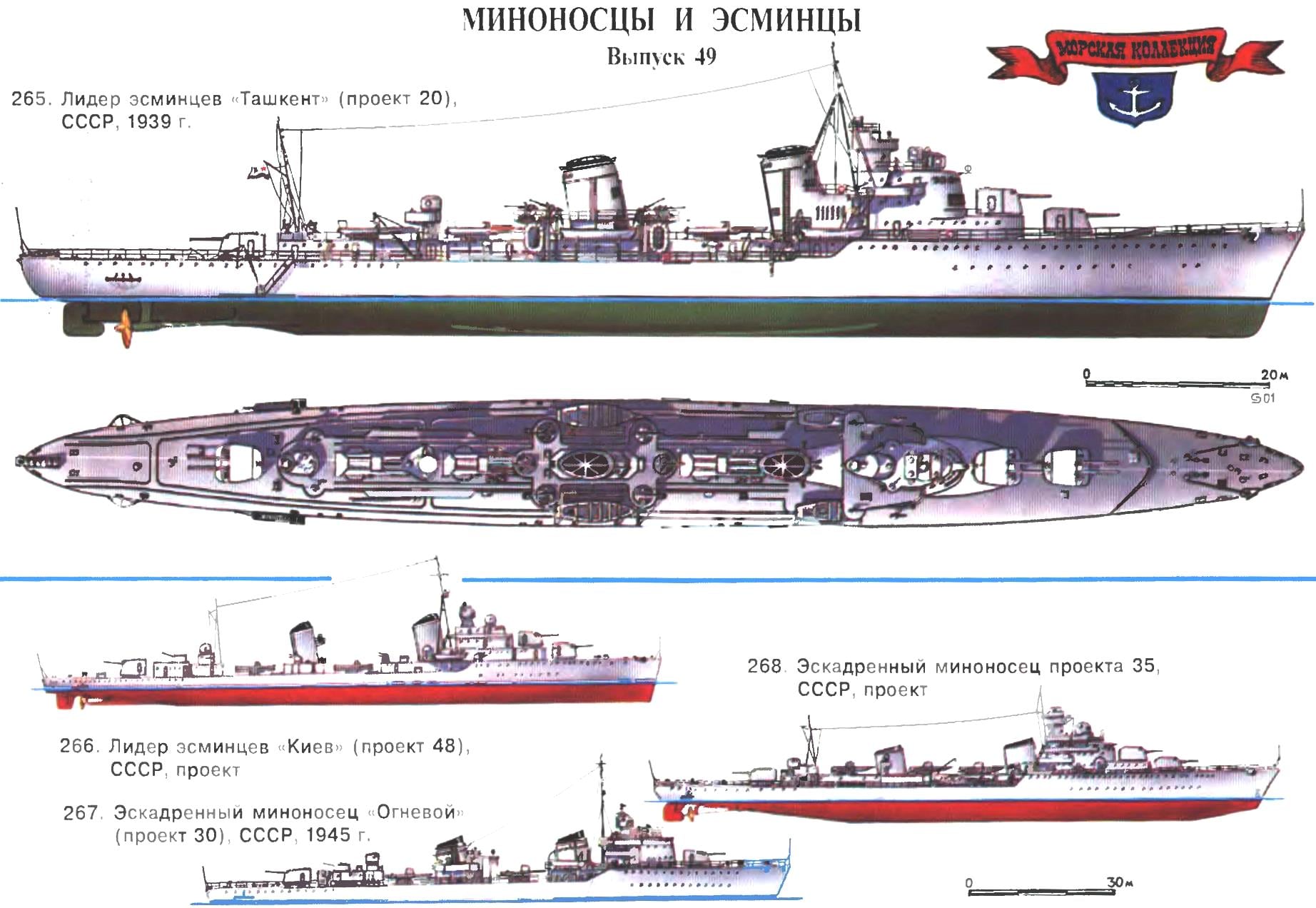 The desire to create a “super ship”, more powerful than any potential enemy of his class, at different times, was typical of the designers and crafters from different countries. But there is a certain pattern: the weaker the economy and industry of the state, those that desire more active; for developed countries, conversely, less typical. Thus, in the interwar period the British Admiralty preferred to build rather modest combat capabilities of the ships, but in large numbers, which ultimately allowed us to have a well balanced fleet. Japan, by contrast, sought to create the ships individually more powerful than British and American. Thus she hoped to compensate for the difference in economic development with their future rivals.
The desire to create a “super ship”, more powerful than any potential enemy of his class, at different times, was typical of the designers and crafters from different countries. But there is a certain pattern: the weaker the economy and industry of the state, those that desire more active; for developed countries, conversely, less typical. Thus, in the interwar period the British Admiralty preferred to build rather modest combat capabilities of the ships, but in large numbers, which ultimately allowed us to have a well balanced fleet. Japan, by contrast, sought to create the ships individually more powerful than British and American. Thus she hoped to compensate for the difference in economic development with their future rivals.
In this respect, a special place is the shipbuilding policy of the then USSR. Here, after the decision of the party and government to build a “Large fleet” obsession “swithcable” was actually a reductio ad absurdum. On the one hand, Stalin, inspired by the success of the aviation industry and of tank, thought just as quickly will be able to solve all the problems and the shipbuilding industries. On the other, the atmosphere in the society was such that any craft project offered by industry and not superior in its capabilities of foreign counterparts, could easily calculate “sabotage”. With all the ensuing consequences. Constructors and shipbuilders simply had no choice: they had to design “the most powerful” and “fastest” ships, which are often contrary to common sense. In practice, this translates into the following: ships with the size and armament of battleships became known as heavy cruisers (but the most powerful in the world!), heavy cruisers — light, and the last leader of the destroyers. In this substitution of some other classes would make sense if the mills could build a cruiser in the quantities in which other countries were building destroyers. But as it was, to put it mildly, not so, marching up reports on the outstanding success of designers often looked to the banal fraud.
During the protracted construction of the leaders of the “Leningrad” it has become clear that on the background of the latest world achievements of these ships has no leaders, but a very ordinary destroyers. Of course, this state of Affairs did not suit the military-political leadership of the country. Therefore, the creation of superessence in the mid 30-ies became one of the priority tasks of the Soviet shipbuilding.
In 1934, the head of special design Bureau CBS-1 V. L. Brzezinski proposed an initiative project of the destroyer, possessing unique characteristics. With a standard displacement of just 1437 tons, he had to reach speeds of 42 knots and bear the arms of the six 130-mm guns in three turrets and two torpedo tubes four-pipe (that is, he was more powerful than the leader of the “Leningrad”). To achieve these parameters was assumed due to the introduction of powerful but lightweight power plant with once-through steam boiler system L. K. Ramzin and wide application of electric welding, which gave a solid gain in weight compared to traditional riveting. The ship received the name “Sergo Ordzhonikidze” built at the Leningrad plant named after A. A. Zhdanov, accelerated pace: laid in June 1935, it is already five months launched. Thus, set a record for speed of construction due to the first applied sectional Assembly of the housing. But then it stalled: affected by many problems to overcome that with enthusiasm was not possible.
It should be noted that the order “Sergo Ordzhonikidze” was rare for domestic shipbuilding to the case where the destroyer was originally created as an experimental vehicle for testing many embedded in its design innovations. It was planned that after completion of the tests (outlined, by the way, at the end of 1936), he becomes the prototype of a series of destroyers of new generation, which will replace the “sevens”. But the risk of a number of design decisions, lack of preparation of the technological base and many other reasons have led to that assigned to the project expectations were not met. Welded structure has received considerable deformation, once-through boilers was too capricious, and the system auto adjust — inefficient. To test the destroyer was released in 1940 under a new, more modest name of “Experienced”. Because of the unavailability of standard weapons, he received a three-pipe torpedo tubes instead of four and three single deck 130-mm gun mount, instead of the same number of two-gun towers. But with lightweight weapons destroyer developed on the measured mile only 35 knots, and only with manual control of the boilers (boiler automation still refused to work). The test was delayed until the beginning of the great Patriotic war, when they had to stop, and the ship tentatively enter the fleet. However, in the sea, he came out and took part in the artillery support of the troops from firing positions in the city. In June 1945, “Pilot” returned to the shipyard for fine-tuning mechanisms, but this work has not started. About ten years failed superesminets conducted on the plant named after A. A. Zhdanov, only occasionally falling off from the pier to participate in the naval parade on the Neva. In the mid 50-ies it was handed over for scrapping.

265. The leader of destroyers “Tashkent” (project 20). The USSR, 1939
It was built at the plant “the Oder-Terni-Orlando” in Livorno, Italy. Displacement standard, t 2836 full 4175 T. maximum Length of 139.7 m, width of 13.7 m, draft 4 m. Capacity twin-shaft steam turbine 130 000 HP, speed 43.5 node. Armament (1941): six 130-mm guns, six 37 mm anti-aircraft guns, six 12.7 mm machine guns, three three-pipe 533-mm torpedo tubes.
266. The leader of the destroyers “Kiev” (project 48), USSR, project.
It was built at the plant named after A. Marti in Nikolaev. The standard displacement of 2,350 tons full 3045 T. maximum Length 125,1 m, width 11,7 m, draft 4,2 m travalio steam-turbine Power installation of 90,000 HP, 44 speed of a node. Armament: six 130-mm guns, two 76-mm anti-aircraft guns, eight 12.7-mm machine guns, two platetronic 533-mm torpedo tubes. Only in 1939 was laid by two ships: “Kiev” and “Yerevan”; both remained unfinished.
267. Destroyer “Fire” (project 30), USSR, 1945
It was built at the plant named after 61 Communards in Nikolaev. Displacement standard, t 2016, full 2767 T. maximum Length of 115.5 m, width 11 m, draft 4,5 m. Capacity twin-shaft steam turbine 54 000 HP (designed) speed of 37 knots. Armament: four 130-mm guns, two 76-mm anti-aircraft luski and six 37-mm anti-aircraft machine guns, four 12.7 mm machine guns, two three-pipe 533-mm torpedo tubes. Just 1939-1941 laid 30 units, of which 11 completed, including 10 in 1947-1950 with the 30-K.
268. Destroyer project 35, Union, project.
The standard displacement of 2,650 tons, full 3350 T. maximum Length 125 m, width 12,5 m, draft 4.2 m. Capacity twin-shaft steam turbine 84, 250 HP, speed 40 knots. Armament: six 130-mm guns, four 37-mm anti-aircraft gun, twelve 12.7-mm machine guns, three traktornyh 53-mm torpedo tubes.
Foreseeing the difficulties on the way of creating superesminets own forces, the Soviet government searched in parallel the possibility of ordering such a ship abroad. From potential contractors most favorable terms offered by the Italian firm “the Oder-Terni-Orlando”. In September 1935, with her signed a contract for the design and construction of the destroyers leader with outstanding for its time characteristics. In particular, the trials he had to keep a speed of at least 42.5 per node for 60 hours!
The Italians decided to try out this ordering a number of unconventional design solutions, reasonably believing that this is best done at the expense of others. If successful, the benefit was mutual: the Soviet Union received a technically advanced vehicle, and the firm has gained valuable experience, which then can be used in the construction of ships for its own fleet.
Construction leader, named “Tashkent”, was carried out very quickly. Laid down in January 1937, he went into the water at the end of the same year. After successful tests in which the powerplant maximum speed 43,53 node, the Soviet Union signed the acceptance report. In April 1939, the Italian team led the leader to Odessa, where he was received by Soviet sailors. Armament was to establish in the Soviet Union, but two-gun 130-mm turret B-2ЛМ by that time, alas, was not ready, and “Tashkent” and “Experienced,” temporarily installed three single 130-mm gun B-13. Standard weapons, the leader was only in 1941, on the eve of the war. Then it increased and air defenses, replacing ineffective 45 mm gun and 37-mm guns.
Tashkent (project 20) in its class and is considered one of the best examples of military shipbuilding 30 years. In addition to the powerful armament he had a rational hull design, successful layout of internal rooms, comfortable main cabin and an indoor storm corridor, allowing personnel to reach all military posts without going to the upper deck. The ship possessed excellent handling characteristics, and the original location of the fuel tanks had provided him with a cruising range of 20-node swing in 5030 miles (for comparison: the leader of the “Leningrad” at half the power turbine, the cruising range was only about 2100 miles).
The drawing of “Tashkent” was planned to build three ships in the USSR, but this had to refuse to use Italian technology in domestic factories. Besides, some of our naval experts about the project leader spoke critically. In particular, the chief of the General staff of the Navy, L. A., Haller believed that “Tashkent”, it is too weak (?!) weapons. Alternatively, for series construction of the project was proposed 48 (“Kiev”), designed by the shipbuilders of the city of Nikolaev. The leader in size roughly corresponded to the “Leningrad,” but carrying weapons even more powerful than Tashkent, and the maximum speed was estimated at 44 knots! However, his features looked great on paper, and there is every reason to believe that, had the ship built, they would be much more modest…
But the ambitious project of “Kiev” pales before the so-called “armored leader”, which started in 1939. This ship (project 47) with a displacement of 6000 tons was to have 70-mm sloped armor belt and carry an armament of six 152mm or ten 130-mm guns! That is, it was a typical light cruiser and was named the leader only because of the reasons mentioned above.
However, the growth in the size and strengthening the arms was characteristic not only for leaders but also for ordinary destroyers of the “Big Navy.” After the project 7 was declared “subversive” (see “modelist-Konstruktor” No. 10 of 2001), in the Leningrad Bureau of the plant named after A. A. Zhdanov was developed destroyer of project 30. The layout of the new ship repeated “seven”, but 130-mm artillery were now housed in the two-gun turrets, and torpedo tubes steel petitionee. However, anti-aircraft armament under the project consisted only of one paired 76-mm gun mount, eight heavy machine guns in four turrets — that is, it was even weaker than the criticized “sevens”. It is interesting that the Deputy Commissar of the Navy, Admiral I. S. Isakov after a visit to the United States insisted, referring to the American experience, on the equipment of the destroyers of the universal towers of the main fire. However, the first estimations showed that the weight of the universal coaxial 130-mm tower installation pull 50 T. This value is considered excessive and further work in this direction was suspended. The traditional striving of our designers to create warships as less tonnage was served, as always, poor service. The Soviet Navy had a chance to adopt a universal artillery one of the first and paid dearly for it, because during the war the aircraft became the main opponent of our destroyers, and to deal with it our sailors was extremely difficult.

269. Destroyer “Experienced” (project 45), USSR, 1941
It was built at the plant named after A. A. Zhdanov in Leningrad. The standard displacement of 1570 tons, full 2010 T. maximum Length 113,5 m, beam 10.2 m, draught 3.2 m. Capacity twin-shaft steam turbine 40 000 HP, speed 35 knots. Armament: three 130-mm guns, five 45-mm anti-aircraft guns, two 12.7 mm machine guns, two four 533-mm torpedo tubes.
In General, the destroyer of project 30 looked very conservative. His body was riveted (welding was used in a very limited way), instead of abroad boost air directly into the boilers used an old fashioned “blast in the boiler room.” Serious criticism lack of autonomy and poor seakeeping. Therefore, in 1940, began to develop a new serial destroyer of project 35. At the expense of a reasonable increase in displacement “thirty-fifth” received a balanced performance and armament similar to that installed at the “Tashkent”. Anyway, the Italian leader has had a great impact on the design of “thirty-fifth” — this is clearly evidenced by its overall architecture, and oval bow superstructure, and the same storm corridor, and the location of the torpedo tubes… Important innovation was the decision to replace the 130 mm tower B-2ЛМ universal B-2U. Perhaps the destroyer is a 35-year project in his class was the best development of the Soviet designers, but unfortunately, have remained only on paper.
Before the war, it became clear that the program of creating a “Large fleet” will fail. The government had to curtail a promising design work and focus on completion of already pledged ships. So, had to abandon destroyers project 35, project leader 47, and a series of the ships of “Kiev” to a maximum of two units, and then only because they have already started to make arrangements. But it did not help that none of the Soviet superessence was not completed before the great Patriotic war, nor to its end. In fact, the only ship of this family fought with the enemy, was the leader of the “Tashkent”. He showed his best side, but, unfortunately, in July 1942 died in Novorossiysk under the bombs of German planes. After the war it was raised, but the recovery was acknowledged unreasonable. Then refused and from the completion of the leaders of the “Kiev” and “Yerevan” towed in 1941 from Nikolaev to the Caucasus.
Head destroyer project 30 “Fire” was put into operation in may 1945, with a three-pipe torpedo tubes as “bunk” petitionee was never created. Ten more ships were completed in the years 1947-1950 in the “corrected” project 30-K (with reinforced anti-aircraft armament and radar). Thus, of the thirty laid before the war destroyers of the project in operation was composed of only eleven. By postwar standards they looked hopelessly outdated, and because of their active service was very brief.
S. BALAKIN
Recommend to read
 WHEN “SIX” — TRUMP
WHEN “SIX” — TRUMP
Car business class AUDI A6. Over the last few years readers of "M-K" have not had the opportunity to meet with the modern cars of the AUDI brand in our "auto show" "exhibited" Executive... WHY WOULD AN ARTIST CURLER?
WHY WOULD AN ARTIST CURLER?
To restore the "hair" rassohnetsya brushes is possible, having moistened it with water and pulled from the handle with a rubber band. Excellent "curlers" are, in particular, of the...
 The desire to create a “super ship”, more powerful than any potential enemy of his class, at different times, was typical of the designers and crafters from different countries. But there is a certain pattern: the weaker the economy and industry of the state, those that desire more active; for developed countries, conversely, less typical. Thus, in the interwar period the British Admiralty preferred to build rather modest combat capabilities of the ships, but in large numbers, which ultimately allowed us to have a well balanced fleet. Japan, by contrast, sought to create the ships individually more powerful than British and American. Thus she hoped to compensate for the difference in economic development with their future rivals.
The desire to create a “super ship”, more powerful than any potential enemy of his class, at different times, was typical of the designers and crafters from different countries. But there is a certain pattern: the weaker the economy and industry of the state, those that desire more active; for developed countries, conversely, less typical. Thus, in the interwar period the British Admiralty preferred to build rather modest combat capabilities of the ships, but in large numbers, which ultimately allowed us to have a well balanced fleet. Japan, by contrast, sought to create the ships individually more powerful than British and American. Thus she hoped to compensate for the difference in economic development with their future rivals.




